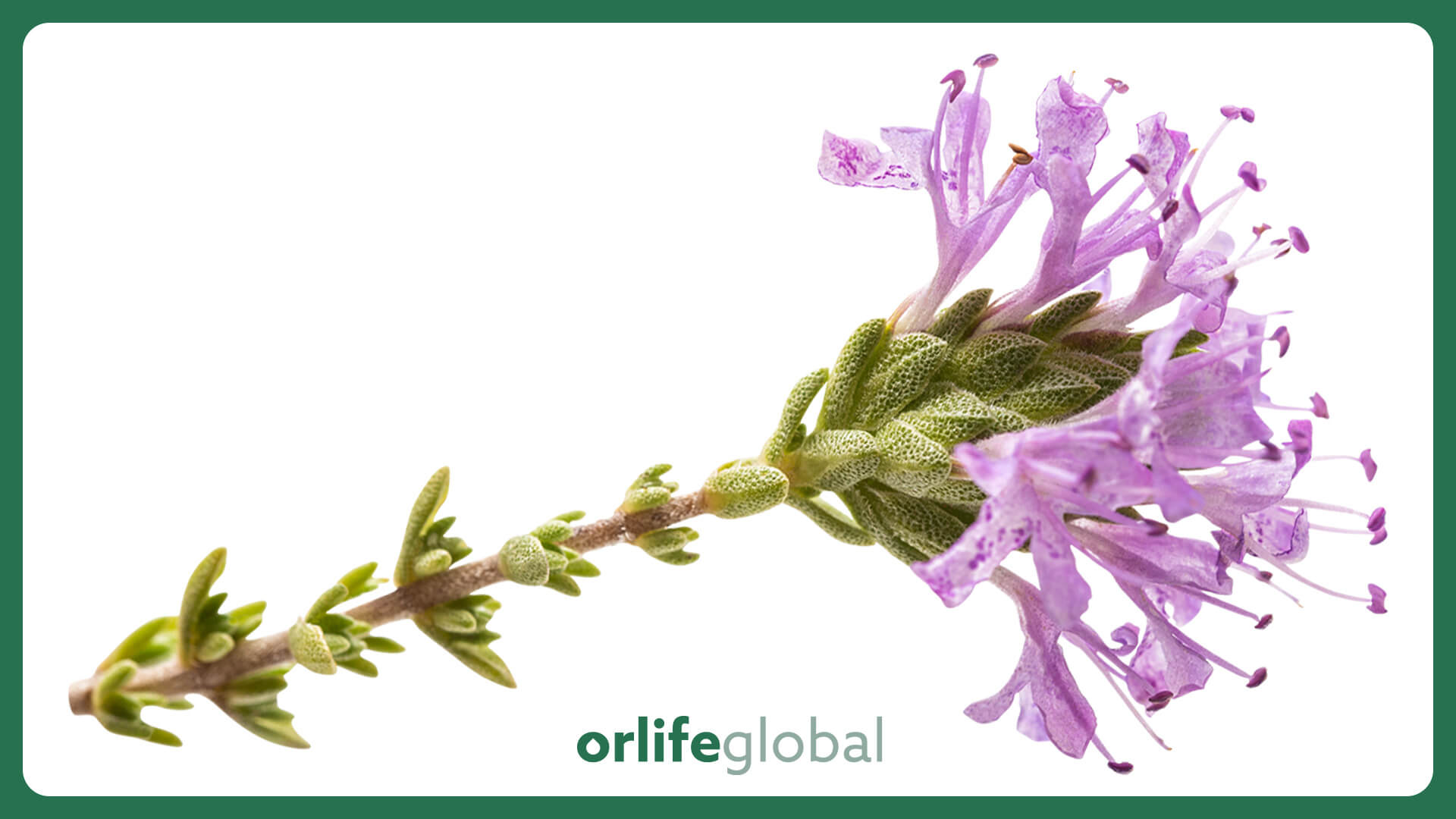
Thyme Essential Oil
Thyme Essential Oil
The genus Thymus belongs to the plant family Labiatae. Labiatae family members are easily hybridized. That is, there is interbreeding of different species, making it difficult to define species and subspecies. Thyme is probably the aromatic plant with the most diverse range of chemotypes [1].
The thyme genera used commercially in Turkey, all of which belong to the Lamiaceae family, are Origanum, Thymbra, Coridothymus, Satureja and Thymus [2].
Thyme essential oil has anthelmintic, antispasmodic, carminative, menstrual accelerator, expectorant, sedative and stimulating activities. In traditional medicine, the plant has been used as a folk remedy against asthma, atherosclerosis, colic, bronchitis, cough, diarrhea and rheumatism [3,4].
Directions:
Thyme essential oil may be applied via inhalation or topically. Before using this essential oil, carefully read Warning & Safety Requirements.
To apply to the skin, do not use undiluted essential oils on your skin.
Used topically, Thyme essential oil helps to promote blood circulation. This essential oil can help in relieving the pain of arthritis, muscle and joint pains. Since It has potent antibacterial and antifungal properties, It can be used to treat wounds and skin infections.
Used in aromatherapy, Thyme essential oil can improve the efficiency of the respiratory tract and also can help purify the air.
Suggested Uses:
Try adding it to a bath or diffuser as aromatherapy, or combining with different essential oils to strengthen its effect.
Warning & Safety Requirements:
If you are pregnant or lactating, please consult with your doctor before using any product containing essential oils.
For external use only.
Can cause skin irritation, avoid contact with eyes and mucous membranes.
Not suitable for children.
Storage Conditions:
Store oils in a cool dry place away from direct sunlight and out of reach of children.
References:
- [1]. Clarke, S.. Essential Chemistry for Aromatherapy. 2nd Ed. Elsevier Health Sciences. 2008.
- [2]. Meriçli-İlisulu, F., Tanker, M., The volatile oils of some endemic Thymus Species Grown in Southern Anatolia. Planta Medica, 340, 1986.
- [3]. Akrout A., El Jani, H., Amouri S. and Neffati M., Screening of antiradical and antibacterial activities of essential oils of Artemisia campestris L. Artemisia herba alba Asso and Thymus capitatus Hoff. and Link. Recent Research Sciences Technological, 2,29–39 2010.
- [4]. Marin, J.B, Libyan Thymus capitatus essential oil: antioxidant, antimicrobial, cytotoxic and colon pathogen adhesion-inhibition properties. J Appl Microbiol. 119:389–399. 2015.
CONTACT NOW


